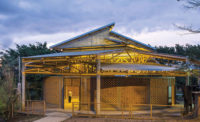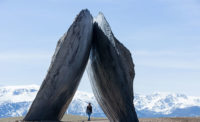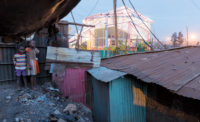For individuals in Licton Springs, an underserved community in northwest Seattle, accessing medical services used to mean traveling long distances to multiple appointments at distant clinics. But in 2015, Neighborcare Health—a nonprofit community health provider that caters to low-income and uninsured clients— set about changing that. Backed by funding from both public and private sources, the organization worked in collaboration with Seattle-based firm NBBJ to build an integrated, patient-focused center that would provide comprehensive care to locals with diverse needs.
Meridian Center for Health, which opened last fall, houses family doctors, dentists, mental health practitioners, and other medical providers under one solar-paneled roof. The building’s versatile design allows patients to get almost all the treatment they need in the same place—a “onestop shop,” says senior associate Brian Uyesugi—while also encouraging collaboration between staff Upon entering the facility, patients encounter an expansive lobby dominated by a large staircase and a wall of reclaimed wood. Senior associate Christina Yates says the unified entryway and reception area was designed “to make sure the patient experience is the same no matter who you are coming to see.”
Throughout the two-story building, there are more than two dozen small multipurpose-consultation rooms that can be adapted for use by different providers, while other larger areas are dedicated to maternity care and group therapy. Yates says the team strove to create a layout that was “flexible but standardized, so services can ebb and flow in the future.” Staff offices are arranged in adjustable “pods,” with cross-disciplinary teamwork in mind, and just since the center opened last fall, Uyesugi says he has heard stories of doctors’ discovering that their patients have an unexpected need and setting them up with another practitioner in the facility on the same day.
To take advantage of the verdant, park-side site, the architects added floor-to-ceiling glazing to second-story exam rooms and placed exterior walkways around the building’s perimeter, offering views of the mature trees and wetland landscape. Weatheringsteel cladding, selected for its ability to withstand Seattle’s rainy climate, further connects the facility to its context: according to Uyesugi, the burnt-orange hue recalls the color of a medicinal clay used by a Native American tribe that once occupied the area.








Post a comment to this article
Report Abusive Comment